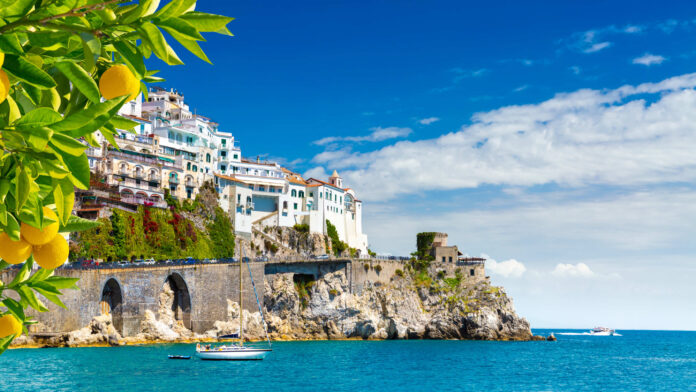Perched atop dramatic cliffs overlooking the Bay of Naples, Sorrento has long captivated visitors with its lemon-scented streets, sweeping sea vistas, and old-world charm. But while its sun-drenched squares and panoramic terraces continue to attract tourists from around the globe, Sorrento offers more than just picture-perfect postcards. This Sorrento Italy travel guide takes a deeper, insider’s look at the coastal town, uncovering its hidden corners, local traditions, and practical tips for a meaningful stay.
Why Sorrento Deserves a Closer Look
Sorrento’s strategic position makes it a popular hub for travelers heading to Capri, Pompeii, or the Amalfi Coast. Yet, too often, Sorrento is seen merely as a stopover. The town itself, with its rich history, artisan culture, and slower rhythm, deserves to be a primary destination.
This Sorrento Italy travel guide aims to offer a perspective that balances Sorrento’s iconic attractions with lesser-known gems that locals quietly cherish.
Getting to Sorrento: Gateway to the Amalfi Coast
By Train:
The Circumvesuviana train from Naples is the most affordable option, with scenic views along the route.
By Ferry:
From Naples or Capri, ferries offer a relaxing approach with spectacular views of the coastline.
By Car:
Driving offers flexibility, but parking is limited and streets are narrow, making local transport or walking preferable once you arrive.
When to Visit Sorrento: Timing Matters
Best Season: April to June, and September to October, for mild weather and manageable crowds.
High Season: July and August, when the town is vibrant but often overcrowded.
Low Season: November to March, when many hotels and ferries reduce operations, but the town retains its quiet, authentic charm.
What to See: The Essential and the Unseen
Table of Contents
Toggle1. Piazza Tasso: The Heartbeat of Sorrento
The bustling main square is a natural starting point, surrounded by cafes and offering a gateway to the historic center. For a more local experience, visit in the early morning as shopkeepers set up for the day.
2. Marina Grande: The Old Fishing Village
Unlike the larger port, Marina Grande retains a timeless fishing village atmosphere. Colorful boats, family-run seafood restaurants, and a slower pace make it a highlight often missed by hurried visitors.
3. Museo Correale di Terranova: The Quiet Cultural Jewel
Away from the busy streets, this museum offers fine Neapolitan art, exquisite inlaid woodwork, and a peaceful garden overlooking the sea.
4. Valley of the Mills (Vallone dei Mulini): The Forgotten Ravine
A hidden ravine right near Piazza Tasso, this overgrown site with ancient ruins provides a haunting contrast to Sorrento’s polished facades.
5. Bagni della Regina Giovanna: The Secret Swimming Spot
A natural pool surrounded by cliffs and Roman ruins, this secluded bay is favored by locals and adventurous travelers.
What to Eat: Beyond Limoncello
Gnocchi alla Sorrentina: The town’s signature dish of baked gnocchi in tomato sauce with melted mozzarella.
Fresh Seafood: Best enjoyed at Marina Grande, where daily catches are served in waterfront trattorias.
Delizie al Limone: A soft sponge cake filled with lemon cream, celebrating Sorrento’s famous citrus groves.
Local food markets, such as the one in Via San Cesareo, offer a chance to taste authentic products and interact with local vendors.
Where to Stay: A Mix of Views and Local Flavor
Luxury: Bellevue Syrene – Historic villa with panoramic terraces.
Mid-Range: Hotel Minerva – Comfortable, family-run, with excellent sea views.
Budget: Sorrento Flats – Affordable, centrally located guesthouses with local charm.
For a quieter experience, staying near Marina Grande or in the hills above Sorrento can offer respite from tourist-heavy areas.
Local Tips for a Richer Experience
Explore on Foot: Sorrento is compact. Walking reveals its narrow alleyways, artisan shops, and lemon gardens.
Use Ferries: Public ferries to Capri, Naples, and Positano offer scenic, less stressful alternatives to buses and cars.
Respect Siesta Hours: Many small shops close in the afternoon. Plan visits accordingly.
Day Trips from Sorrento: Strategic Advantages
Sorrento’s location makes it a perfect base for exploring:
Capri: 30-minute ferry ride.
Pompeii: About 30 minutes by Circumvesuviana train.
Positano and Amalfi: Accessible via ferry or SITA bus along the Amalfi Coast.
Naples: Roughly one hour by train or ferry.
Final Thoughts: Sorrento’s Subtle Magic
Sorrento may not boast the grand cathedrals of Rome or the Renaissance allure of Florence, but its appeal lies in its understated beauty, its living traditions, and its ability to slow even the most hurried traveler. This Sorrento Italy travel guide invites visitors to move beyond the superficial checklist and engage with the town as more than a transit hub. Whether you’re sipping espresso in a quiet piazza, wandering lemon-scented lanes, or watching fishermen at work, Sorrento rewards those who linger.
In a country famed for its icons, Sorrento’s magic is found in the everyday.








